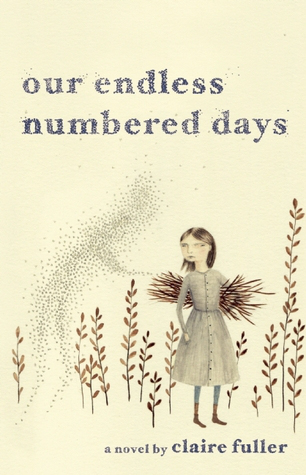 Claire Fuller is a novelist and short fiction writer. For her first degree she studied sculpture at Winchester School of Art, specializing in wood and stone carving. She began writing fiction at the age of 40, after many years working as a co-director of a marketing agency. Claire has a masters in Creative and Critical Writing from The University of Winchester. Her first novel is “Our Endless Numbered Days.” The following is a complete transcript of her interview with Cracking the Cover.
Claire Fuller is a novelist and short fiction writer. For her first degree she studied sculpture at Winchester School of Art, specializing in wood and stone carving. She began writing fiction at the age of 40, after many years working as a co-director of a marketing agency. Claire has a masters in Creative and Critical Writing from The University of Winchester. Her first novel is “Our Endless Numbered Days.” The following is a complete transcript of her interview with Cracking the Cover.
Have you always wanted to be a writer?
No, I wanted to be a sculptor and that’s what I studied for my first degree. I’m a stone and wood carver mostly. I read a lot though, but I always thought books weren’t written by ordinary people and that they came out of a writer’s head fully formed. I didn’t start writing until I was 40 – eight years ago.
Where do your ideas come from? Specifically the idea for “Our Endless Numbered Days”?
They come from all sorts of places – something someone says, something I read, daydreams. The idea for Our Endless Numbered Days came from a news story in 2011. A teenager called Robin van Helsum appeared in Berlin saying that he had been living wild in the forest for several years with his father. Robin’s story turned out to be false, but before anyone became aware of that, I thought “What if?” If his story had been true what took him and his father to the woods, how did they survive and why did Robin leave when he did?
Did you know much about retreaters before writing “Our Endless Numbered Days”?
I knew nothing at all about retreaters. I knew a bit about survivalists and preppers, and I remember hearing about nuclear fall-out shelters when I was growing up in England in the 1970s, but my knowledge was sketchy. I did a lot of online research – reading posts on survivalist forums, locating the first survivalist magazines.
Peggy’s father is more complex than at first glance. How did his character evolve?
I started writing the novel with a scene of Peggy and James in the forest. I wanted to make things difficult for them, but I wanted them to survive, in which case James needed to have some skills – how to hunt animals, knowing which wild foods were edible and which ones poisonous. And he needed to have a reason to take Peggy into the forest. James’ character grew from these necessities. I also tried to put myself in his position – a man who hasn’t ever had to work, a man who knows how to fend for himself, a man who loves his wife but is rejected, and a man who believes the world is going to end very soon. All those things created a complex character.
Though Peggy’s innocence is the first thing I noticed, it was her resiliency that really stuck with me. Was it difficult balancing out the nuances of her character?
I tried to show her growing up, I suppose. She’s eight in 1976, and seventeen at the end of the novel. She is a naïve and trusting eight year old – it takes her quite a while to work out that things are going wrong in her life. But she is a survivor; she just finds her own and sometimes unusual coping strategies for the things that happen to her in the forest.
Liszt’s La Campanella is the music that ties your book together. Why that piece?
I needed a piece of music that was going to be difficult to learn, since James and Peggy really could only take one piece of sheet music with them, and the learning needed to take a long time. It also needed to be relatively short – so that the reader could understand the whole piece in one scene, and it had to be beautiful. I can’t play the piano, so I did lots of online research about what piece of music would be suitable. At the same time, I was researching which make of concert piano Peggy’s mother should have, and finally settled on the Bösendorfer. And then by a weird coincidence I found that the piano manufacturer had created a video about making their pianos, and had set it to La Campanella. You can see it here: https://www.youtube.com/watch?v=MEcIL9nV4No
This is your first published novel. Is it the first novel you’ve written?
Well, yes and no. I wrote 50,054 words for Nanowrimo one year, but it could hardly be called a novel. I didn’t revise it at all, and deleted all of it a few months later. So Our Endless Numbered Days is the first novel I completed.
What are you working on now?
I’ve just finished the first draft of my second novel. It’s about a woman called Ingrid who writes letters to her husband which she hides in his books, and about her daughter Flora, who is looking for her mother and the letters.
Is there a book from your own childhood that still resonates with you? Why?
There are lots, but one would be Under Milk Wood by Dylan Thomas. I read the part of Mrs Ogmore Pritchard when I was at school, and I can still remember many of the lines today. The rhythm of it has stayed with me, the characters, the town, and all those secret lives.
